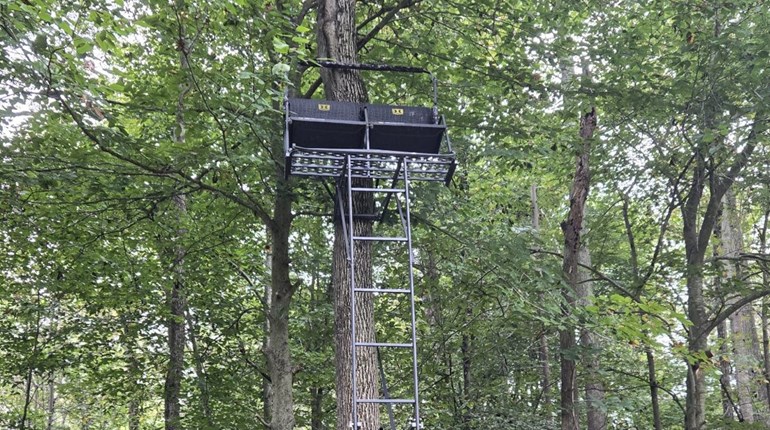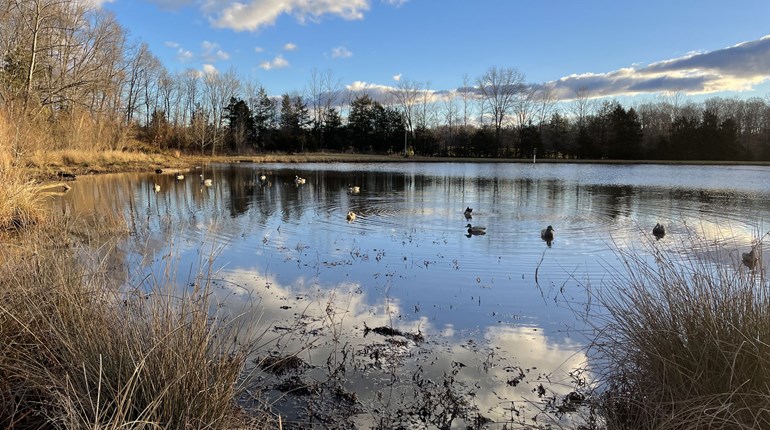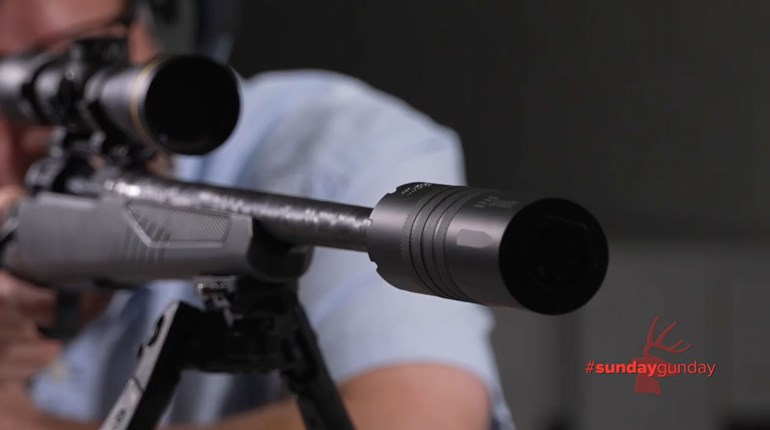
Deer hunting is a lot of things. It can be exhilarating, boring, occasionally predictable and certainly frustrating. During the rut, the chances of seeing deer can increase due to much more movement as the animals seek to breed. However, with the rut comes erratic behavior. Gone are the feeding patterns ... and often gone is any form of consistent behavior. Food sources change and hunting pressure compounds the change in deer behavior as well.
Bucks travel
During the rut, does generally stay in their home range. However, bucks most often do not. I have read a number of articles by biologists and researchers that discuss how bucks move out of their home range to breed, which prevents a lot of inbreeding from happening. This makes sense and, given my last 10 years or so of keeping track of trail camera photos and videos and anecdotal observations, I have noticed that in the summer and early fall we see the same bucks while hunting or walking through the woods. Something changes in late October and November, which is when the rut takes place in my part of the country. Bucks we have never seen before start making appearances in the flesh and on camera.
In fact, the past few years we have had a quality buck show up two to three times on camera and then he disappears after the rut. After talking to an adjoining neighbor, we found out that when comparing photos from our cameras that when we saw the buck during the rut, the landowner that saw him during the summer and fall quit seeing him. My family and a family on the other side of us started seeing photos of this buck only during the rut. That said, get in the woods and know that you may see a quality buck that you have not seen before during the rut!
Food changes
Food sources start to dry up as fall turns into winter and deer often start looking for alternatives. In my region early archery and muzzleloader season means acorns are the go-to food source, but then a change occurs and browse, pasture and other foods end up being sought. Know your food sources and watch for those changes in behavior of the deer and see if the availability of food has had an impact on their comings and goings and adjust accordingly. You may have to start hunting pastures or overgrown fields, and stop hunting wood lots or farm fields if the acorns or grain is mostly gone.
Hunting pressure
The pressure we hunters put on deer cannot really be calculated. However, know that deer are very in tune with their surroundings. One piece of property I lease to hunt is 200 acres. It includes a powerline area. Early on in my lease an older gentleman who lived nearby warned me to not be lazy and to keep my truck as far away from the powerline as possible. He suggested I pull inside the gate some 130 yards from the powerline and sneak in. I was game for that, but I was curious. I asked why.
He told me the previous club was lazy and the moment they drove onto the powerline to park and hunt the far end of the property, the deer ran 400-plus yards and cut through a neighbor’s property and yard to cross a small state road, and started browsing and meandering through his yard. He said it was downright funny how that happened with at least three deer, and sometimes up to 10 deer, every time. He figured this out by driving out to the end of his driveway and looking down the powerline and seeing the jeeps and trucks parked there and hunters getting out of them in blaze orange.
Walk in from a distance, be erratic and unpredictable. Park in a different spot. Arrive at different times and stay later. I cannot tell you how many times I switched up my approach to a property and came in from the opposite side and sat on the opposing hill or ridge or field edge and got a deer the first or second time doing so.
Timing
Everyone, including me, likes to hunt the early morning and late afternoon. I feel more confident I will see deer. However, as the season progresses, deer go nocturnal, but sometimes move in the late morning or early afternoon to avoid humans and get a bite or to lie where the sun is warming a hillside. When researching deer harvests for a number of previous articles I have written, I spoke with game wardens and taxidermists and was surprised to hear that some of the best bucks taken during the season were taken late morning when folks were leaving the woods, or early afternoon before most of us got back in the woods. My father talks with our lease holder often. The landowner works on a tractor around his property and he has shared how the deer are often in the powerline hours before the sun goes down or in his large back yard/field just after lunch!
This season, after not seeing deer for a few weeks, I decided to go sit on the powerline during the early afternoon. I tucked into some tall grass that was left unmowed on a steep hillside and broke some of it down to see the slopes to my left and right and the bottom right in front of me that had been mowed. The first time I did this, a buck walked out within 10 minutes of me plopping down in the grass. My father has had a number of similar experiences like this and has been at my house waiting when I got off work with a deer for me to process hours before dusk.
Sleep in a few mornings and then go sit from late AM to late afternoon in the deer woods. This is particularly good advice on an overcast day or a cold or windy day. Approach your stand from a completely different direction and don’t be afraid to walk further to get to where you want to hunt to avoid alerting deer. Check out new food sources, hunt those areas you rarely hunt. Your odds of seeing deer will certainly increase. Good hunting!







































